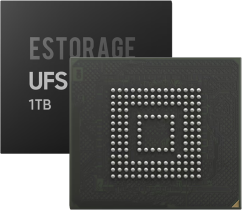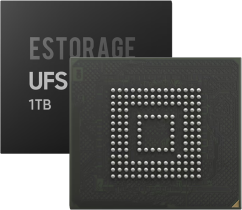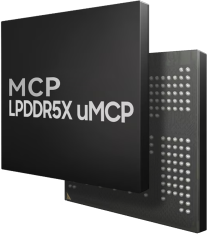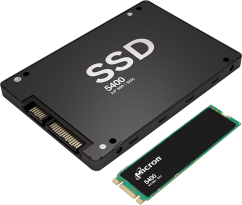The MediaTek MT6635 is a 4-in-1 connectivity chip that contains two 2.4GHz Wi-Fi transceiver front-ends, two 5GHz Wi-Fi transceiver front-ends, a Bluetooth transceiver front-end, a GPS L1-band receiver front-end, a GPS L5-band receiver front-end, and a complete FM receiver in a WLCSP package. The simplified block diagram and how to use MT6635 are shown in Figure 1-1. The control logic at the top controls each subsystem independently. Each subsystem also has a dedicated LDO. A thermal sensor and a low-speed ADC (analog-to-digital converter) are provided to monitor the temperature changes of the MT6635. The MT6635 does not have its own dedicated crystal oscillator. It uses an external (possibly temperature-compensated) oscillator or a clock source from a companion chip in the platform.
For 2.4GHz Wi-Fi and Bluetooth, the MT6635 offers an advanced switching mechanism that can quickly switch between Wi-Fi and BT modes. The front end of the transceiver is on the MT6635, while the ADC/DAC (analog-to-digital converter/digital-to-analog converter) is in the matching modem chip. The interface driver/receiver buffer is designed to drive the tracking loading of the PCB. The GPS IP in the MT6635 is similar to Wi-Fi/Bluetooth, so the ADC is in the matching modem chip. In contrast, FM systems integrate the modem and ADC in the MT6635 and do not require an interface driver/buffer.
Compared to its predecessor, MT6631, MT6635 has the following new features:
Wi-Fi 2.4/5 GHz supports MIMO 11AC.
Wi-Fi 5 GHz supports 1*1 VHT80 + VHT80.
1*1 Wi-Fi 5 GHz and Wi-Fi 2.4 GHz dual-band dual-current
Dedicated BT front-end saves BT current and higher TX power
GPS supports L5 band. Support for this advanced feature (GPS L5 band) is defined in the SOC platform datasheet.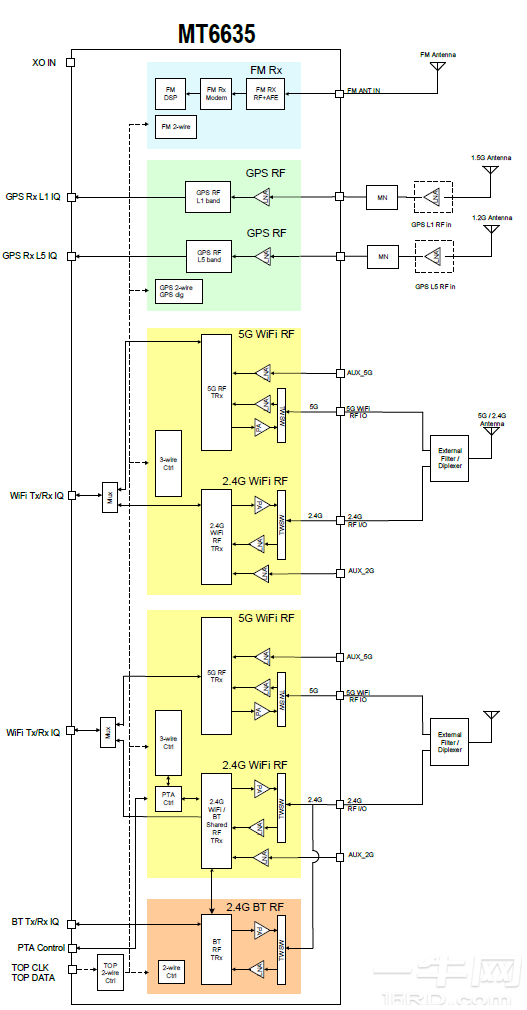
Figure 1-1. MT6635 block diagram
features
The MT6635 is a 4-in-1 connectivity chip that contains two 2.4GHz Wi-Fi transceiver front-ends, two 5GHz Wi-Fi transceiver front-ends, a Bluetooth transceiver front-end, a GPS L1-band receiver front-end, a GPS L5-band receiver front-end, and a complete FM receiver in a WLCSP package.
Support GPS external LNA
1.2.1 Wi-Fi/bt
2*2 Wi-Fi 5 GHz and Bluetooth WLAN Simultaneous Operation (FDD)
Dual band (2.4 GHz and 5 GHz) two streams 802.11 A/B/G/N/AC RF with 20/40/80 MHz bandwidth
Support for global Wi-Fi 5G channels, including new bands in the US and China (5,925 MHz) and Bluetooth FDD operation
Support 802.11d/e/e/i/j/j/j/k/r/v/w with Companion d-die
Integrated 2.4 GHz/5 GHz PA
Integrated power detector supports per-packet TX power control
Built-in calibration for PVT variation
Configurable Wi-Fi 2.4/5 GHz PA for increased efficiency in low power applications.
Supports external PA and LNA for Wi-Fi 2.4 GHz and Wi-Fi 5 GHz.
Bluetooth
Bluetooth specification v2.1+EDR, 3.0+HS and v4.2+HS compatible
Bluetooth 5 dual mode for LE 2 Mbps, LE long range and advertise extension
Integrated PA
Low power sweep function to reduce power consumption in scan mode
1.2.2 FM
65 to 108 MHz with 50 kHz step
RDS/RBD is supported
Digital stereo modulator/demodulator
Digital audio interface (FM 2-Wire Bus)
Fast seek time 30 ms/channel
Stereo noise cancellation
Audio sensitivity: 3 dbμVEMF (Sinad = 26 dB)
Audio Sinad ≥ 60dB
Counter-judgment
Support for short antennas
1.2.3 GPS
RF supports simultaneous dual-band L1 and L5 operation. (The MT6635 only includes L5 band support in the transceiver component, the SOC platform datasheet further defines support for the entire GNSS L5 function)
RF supports GPS, Galileo, Glonass and Beidou.
Accept GPS + Glonass + Beidou/Galileo at the same time for more accurate positioning
Built-in calibration for PVT variation
Typical RX tracking sensitivity - 163 dBm
Support for external LNAs
Multi-mode filters for different GNSS receiver modes
RF supports GPS, Galileo, Glonass and Beidou.
Accept GPS + Glonass + Beidou/Galileo at the same time for more accurate positioning
Built-in calibration for PVT variation
Typical RX tracking sensitivity - 163 dBm
Support for external LNAs
Multi-mode filters for different GNSS receiver modes
Other
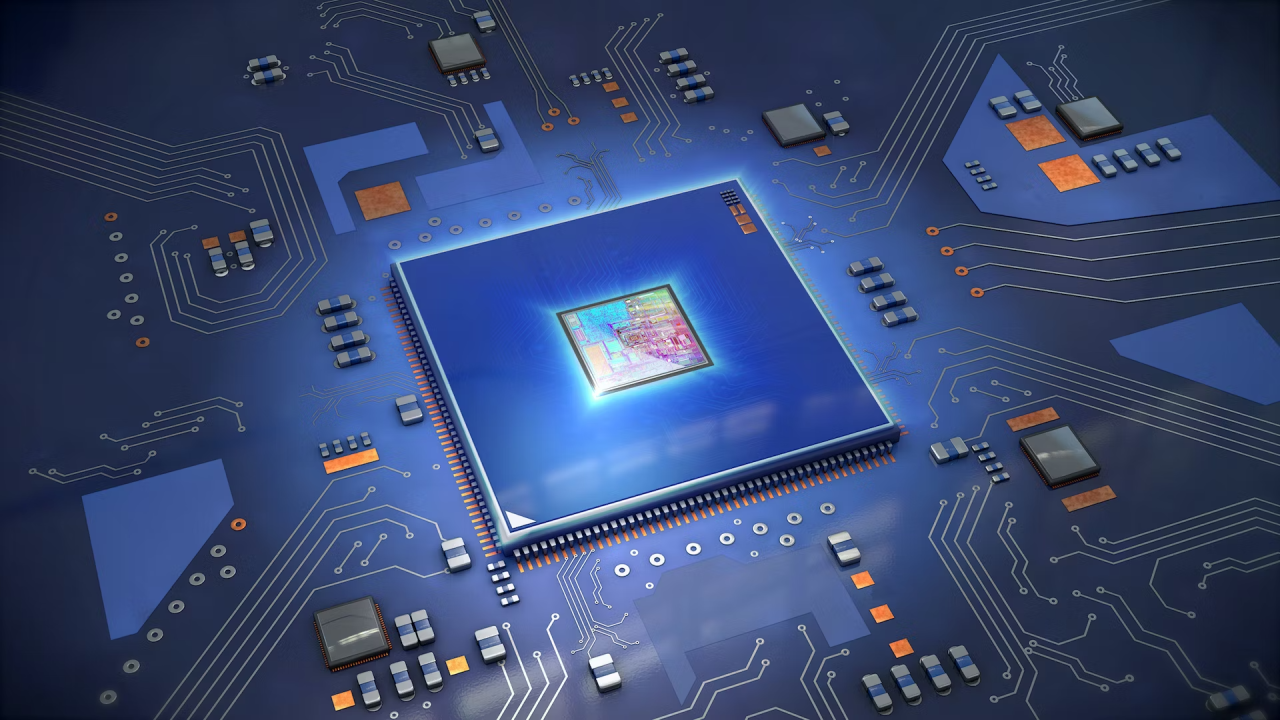
What is HBM (High Bandwidth Memory)?
2024.09.05
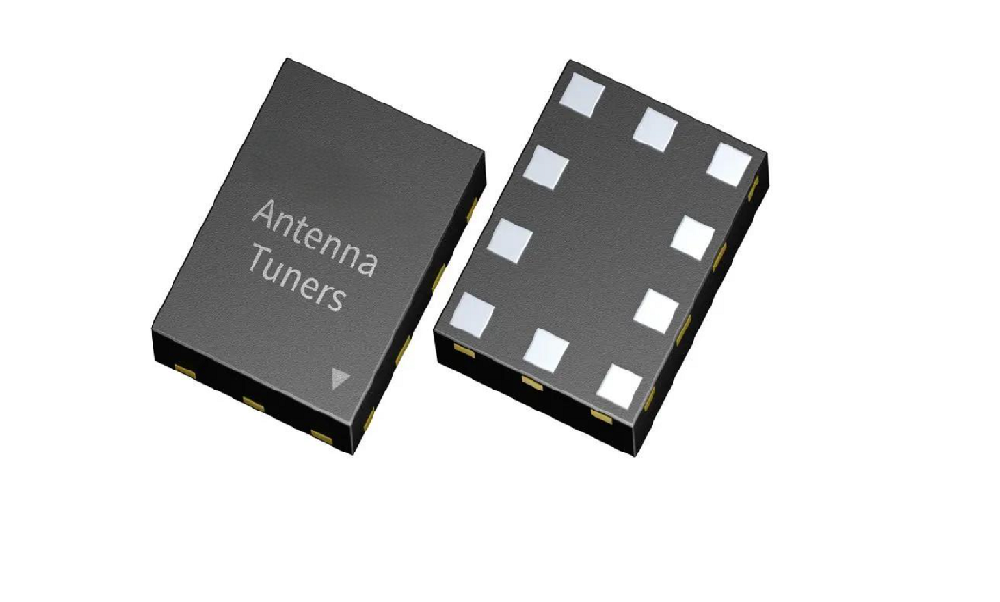
What is Antenna Tuner IC?
2024.09.20

What’s the Difference between LPDDR and DDR?
2024.09.25
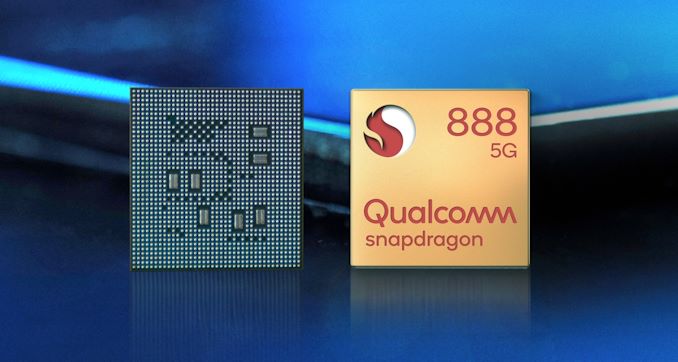
Snapdragon 888 5G Mobile Platform
2024.09.26

What is WiFi 6E?
2024.09.26
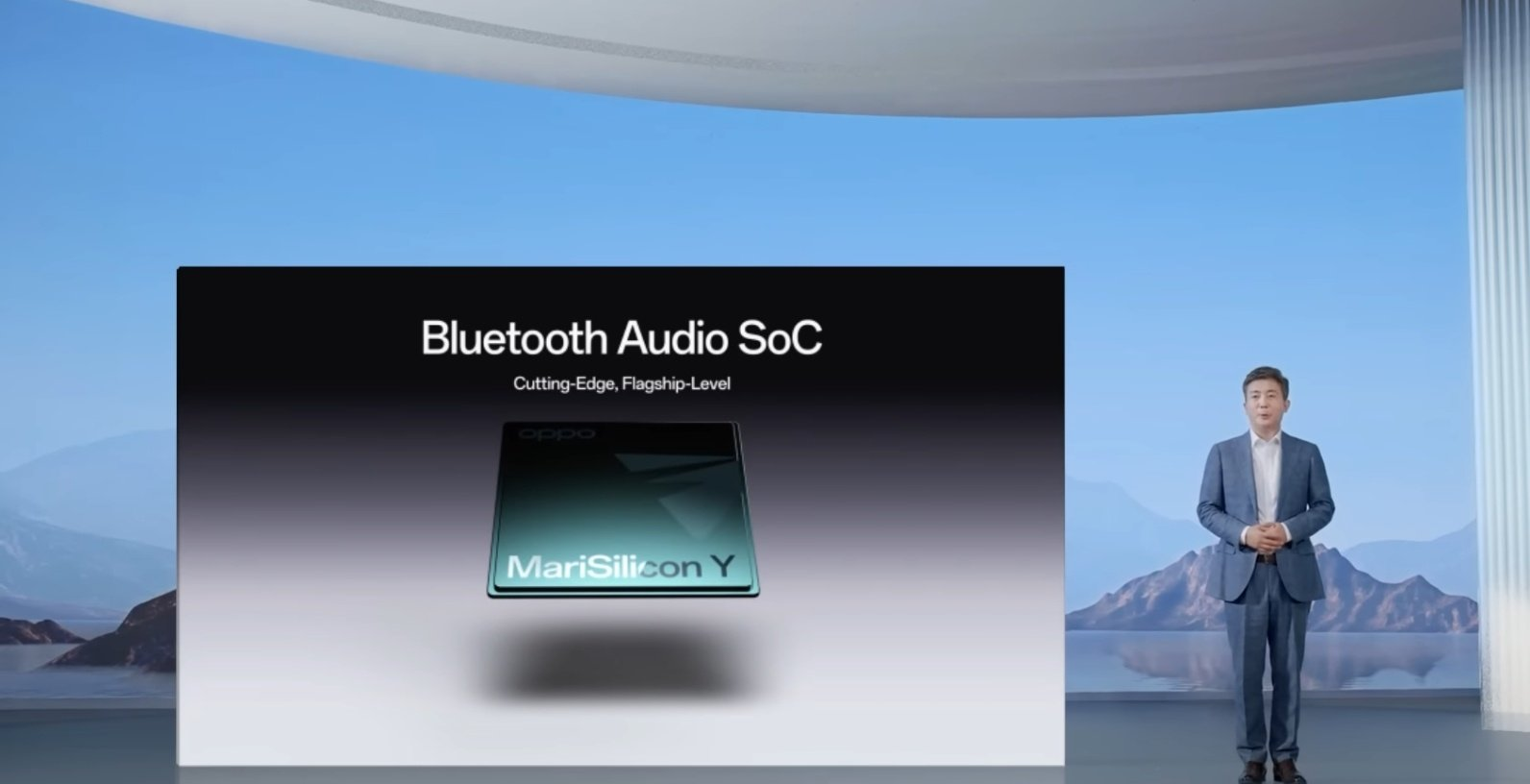
What is Bluetooth Audio SoC?
2024.09.26

What's HBM3E (High Bandwidth Memory 3)?
2024.09.26

What is an Audio Codec?
2024.10.09

